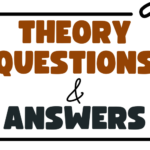The website has the complete lesson note for all the subjects in secondary school but this piece showcases the JSS1 Computer Studies Lesson Note on Data Processing. You can use the website search button to filter out the subject of interest to you.
CLICK HERE to download the complete Document: DOWNLOAD HERE
TOPIC: DATA PROCESSING
CONTENT:
- Definition of data processing
- Data processing cycle
Definition of Data Processing
Data processing is the process of producing meaningful information b y collecting all items of data together and performing operations on them to extract information.
Data processing can also be described as a series of actions or operations that convert or manipulate data into useful information.
Data processing involves the systematic recording, calculation, selection and combination of data to obtain facts and disseminate facts in relation to events in our everyday life. The processing of data can either be done manually or with the use of electronic machines. Data processing can involve calculating, sorting, editing etc.
DATA PROCESSING CYCLE
Data processing cycle includes the following:
DATA GATHERING
At this stage, data is gathered through various ways such as asking questions observations, reading books, listening and watching electronic media (radio and television). For example, giving a prospective customer a form to fill before opening a bank account is a form of data gathering.
DATA COLLATION
This involves writing out, sorting, summarizing or classifying data into groups, structures or files. Data is sorted in a way that will make data processing easy
Data collection is a term used to describe a process of preparing and collecting data. For example: as part of a process improvement or similar projection. The purpose of data collection is to obtain information to keep on record, to make decisions about important issues, to pass information on to other. Primarily, data is collected to provide information regarding a specific topic.
INPUT STAGE:
All information is entered into the computer through an input terminal (eg. mouse, keyboard, web camera etc). Input devices are devices that accept data in its original format, examples includes keyboard and mouse. Data is entered through input devices. This is the process through which collected data is transformed into a form that computer can understand. It is a very important step in the data processing cycle because correct output result totally depends on the input data.
Three steps are involved when inputting data into the computer:
- Collection: this refers to gathering the data from a variety of sources and assembling it.
- Verification: means checking the data to determine whether it is accurate and complete, and if it should be included for processing.
- Coding: this is translating the data into machine-readable form. Data punched into IBM cards is one example of coding.
PROCESSING STAGE: During processing or manipulation, one or more of the following tasks may be performed on the input data.
- Classifying: data are organized by characteristics meaningful to the user. For example, a student may be identified by the admission number and class.
- Sorting: in this step, the data may be arranged in a particular sequence to facilitate processing.
- Calculating: Calculations may be required to determine a patient’s account balance or a student’s grade point average.
- Summarizing: This involves reducing a large document into a smaller size containing important points.
At this particular stage, data is converted (processed) into information.
STORAGE STAGE:
All computers need to store and retrieve data for processing. Storage can be grouped into two categories primary storage and secondary storage.
Click on the Downloadable Button to get the FULL NOTE



